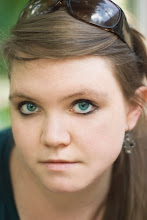I was driving this past weekend out near the MD line exit of I-83 when I saw this ridiculously awesome sunflower field on the side of the road. I came back the next day with my camera (and some friends). It was unbelievable! I've never seen so many sunflowers in one place in my life...

While we were taking pictures a local farmer pulled up in a golf cart and started telling us about how the field is owned by a company that makes sunflower oil. Apparently most of the company's fields are down near Gettysburg but they recently bought some land in MD/PA. This is the second year the sunflowers have bloomed here.
Lighting:
The light was pretty harsh at the time of day we were visiting and as it happened most of the sunflower heads were facing away from the sun... meaning I would need to shoot into the sun to photograph them. I came up with an idea to try and overpower the sun with my Speedlight off camera. I set my onboard flash and Speedlight to synchronizing channels and activated the Speedlight as a slave in TTL mode, then held the Speedlight right up to the Sunflower. So here's the first image I took:

As you can see I was still getting a fair amount of flair (but I thought the image itself exposed nicely). After some fine tuning I was able to avoid the blotchy glare and get a nice sunburst from the sun. In order to get the sky exactly how I wanted it though I was having to underexpose the foreground (even with the fill flash). Even though my HDR book had not yet arrived I had read enough online tutorials to set up my camera for auto bracketing... and with that I attempted my very first HDR image:
Obviously the results are far better than the first image I took. I was able to get far more tones and the result is a softer, more evenly balanced image. This HDR process was not problem-free, however. I did run into a few of the quirks of HDR. The sunflowers, for example, were moving in the wind. Although I had shot using auto bracketing I had not changed my settings to continuous shooting mode. There was a small lag between shots. You can see with the flowers on the left that when Photomatix merged the images together it ghosted the outline of where the flowers had been in the other images. The effect is kind of neat in it's own way but not ideal for what I was trying to achieve. The flower in the foreground had the least amount of ghosting issues. I'm not sure if that had to do with it having less movement or being on the same plane as the lens... or whether it's to do with it getting more light being closer to the flash. Either way, I'm relatively pleased with it as my first attempt at HDR.
Light Painting:
Since there were such awesome colors and textures, I figured I'd play around with some slow shutter speeds and take a stab at light painting. I wasn't sure whether it would work since it was still daylight but I found that as long as I was shooting towards the ground the images weren't getting blown out. I took a few where parts of the image were still recognizable:


And then some that are a little more abstract:


HDR Portrait:
Our friend and her little girl came on the 45 minute drive up I-83 with me to take these pictures. I took a few photos of them but when I got back I realized that the shadows on some of the pics were pretty harsh... After processing that first HDR I wondered how Photomatix would do with a portrait. I didn't have multiple files for these portraits but I had read about generating HDR images from one RAW file so I gave it a try. I processed the original raw at three different exposures, saved them as TIFF files and imported them into Photomatix. After a little over an hour of fiddling with the slider bars in the tone-mapping stage I got the image looking semi-decent then brought it into photoshop for finishing touches. You can clearly see the difference between the original and the final image:




No comments:
Post a Comment